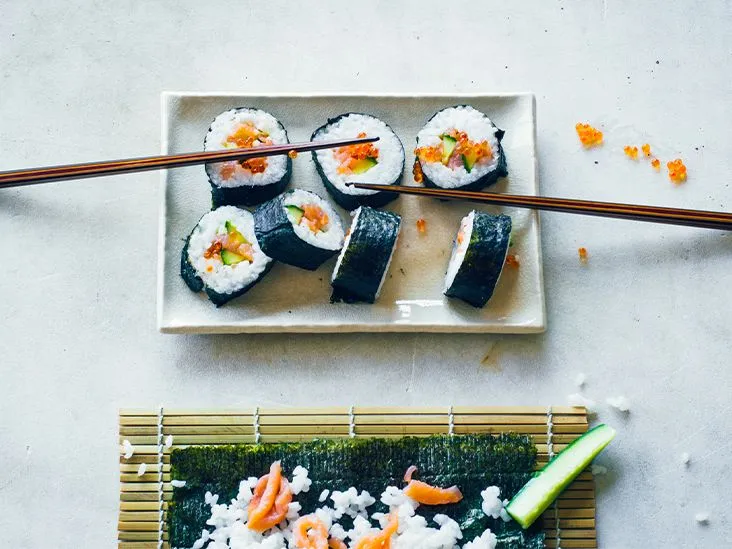Is Sushi Safe for Those Following a Gluten-Free Diet?

Is Sushi Gluten-Free?
Sushi, a beloved Japanese specialty, is all about vinegared rice paired with a mix of fillings and toppings like fish, vegetables, and various sauces. If you're committed to a gluten-free lifestyle, you might be asking, "Can I safely enjoy sushi?" Let’s break it down into simple, digestible parts.
Gluten-Free Sushi Ingredients
Many ingredients that make up your sushi are naturally gluten-free. Here are some common ones to look for:
- Rice: Traditional sushi rice—whether white or brown—is usually gluten-free. It’s prepared with water, rice vinegar, sugar, and salt. Just keep in mind that not all vinegars are gluten-free, so double-check if you have any concerns.
- Nori (Seaweed): This edible seaweed is used to wrap your sushi rolls and is a safe, gluten-free choice.
- Fish & Seafood: Freshly sliced raw or cooked seafood is often used as a topping or filling. However, be cautious with any sauces, like teriyaki, that might include hidden gluten.
- Vegetables: Veggies such as avocado, cucumber, carrots, and green onions are naturally gluten-free and add a refreshing crunch.
- Other Fillings: Items like plain tofu, eggs, and certain meats can be great additions. Just ask whether any marinades or sauces are used that might contain gluten.
- Gluten-Free Soy Sauce: True to its name, opt for soy sauce or tamari that is specifically labeled as gluten-free.
- Wasabi & Pickled Ginger: Pure wasabi (or traditional Japanese horseradish) and pickled ginger are generally free from gluten, offering the perfect kick for your sushi.
Ingredients to Avoid
While many sushi components are safe, some ingredients might not be suitable for a gluten-free diet. Consider avoiding these:
- Imitation Crab: Often made from processed fish with wheat starch, which means gluten could be hiding inside.
- Tempura: Battered and fried items, referred to as tempura, usually involve wheat flour, making them a potential risk.
- Breadcrumbs: Some rolls include breaded elements like prawn tempura where wheat-based breadcrumbs are used.
- Soy Sauce & Other Sauces: Traditional soy sauce, teriyaki, eel, barbecue, and Ponzu sauces are typically made with gluten-containing ingredients. Always check the label or ask at the restaurant.
Tips for Safe Gluten-Free Sushi
Want to keep your sushi experience both fun and safe? Here are some practical ideas:
- Opt for Freshly Made Sushi: Enjoy sushi that’s prepared right in front of you so you can confirm the ingredients.
- Request Substitutions: Ask if gluten-containing items can be swapped for alternatives—like replacing imitation crab with avocado.
- Keep It Simple: Rolls with just one or two fillings are easier to verify compared to those with numerous ingredients and sauces.
- Call Ahead: When dining out, a quick phone call can help confirm if gluten-free options are available and if proper food handling measures are followed.
- Bring Your Own Soy Sauce: Consider carrying your own gluten-free soy sauce or tamari, especially when you're unsure about the kitchen’s ingredients.
- Make Your Own: Have you ever thought about making sushi at home? This not only ensures your sushi is gluten-free but can be a delightful cooking adventure with friends or family.
The Bottom Line
The great news is that many sushi varieties are gluten-free and safe to enjoy—even if you have celiac disease. The key is to be vigilant about certain ingredients like imitation crab, tempura, and specific sauces that might introduce gluten. When in doubt, ask questions, check labels, or even prepare your own sushi at home to take full control of what you eat. Have you ever wondered how a few small tweaks can completely transform your dining experience?